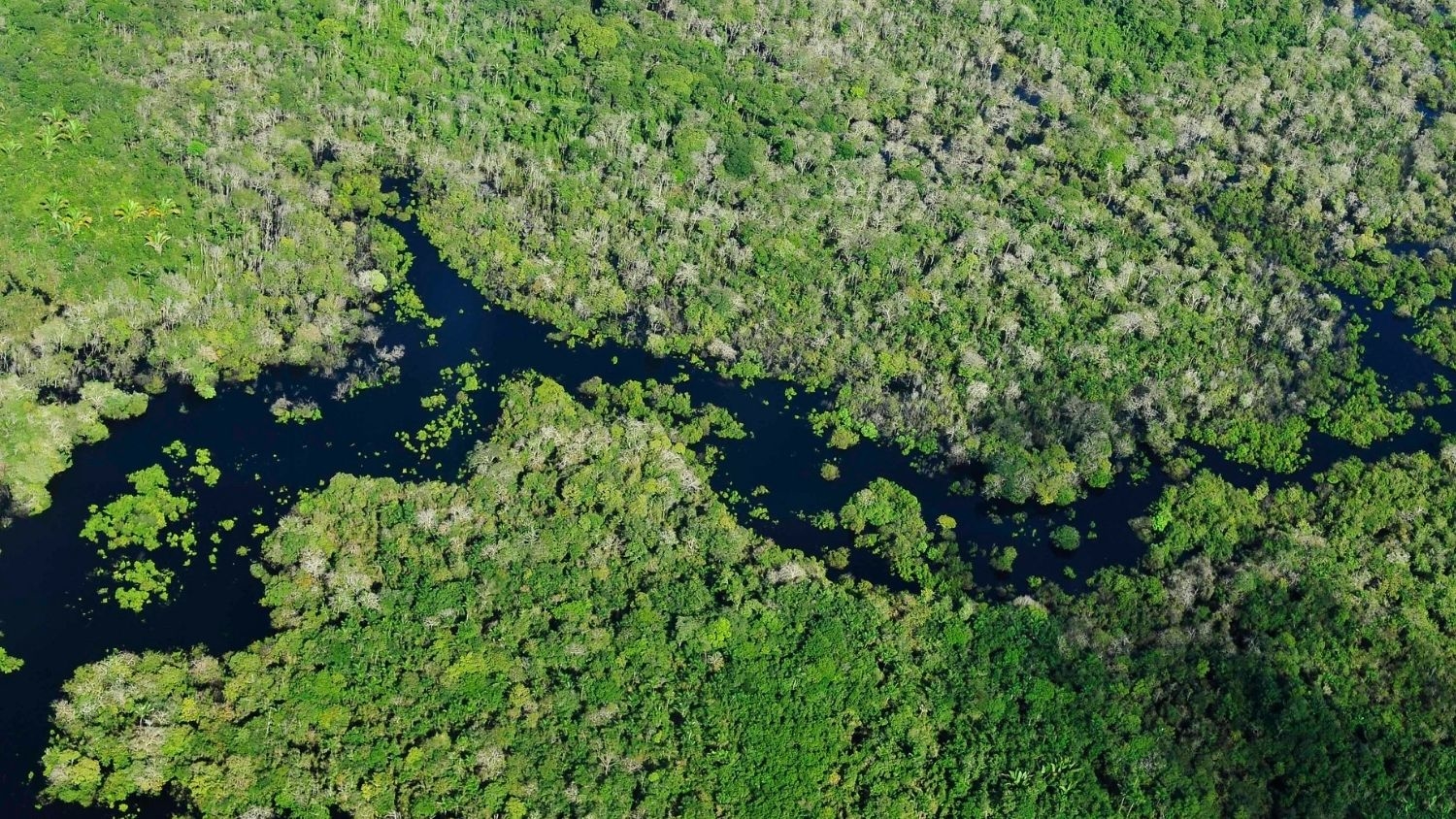Impact of Effort to Reduce Amazon Deforestation Overestimated, Study Finds

Projects designed to protect the Amazon rainforest in Brazil and reduce greenhouse gas emissions overestimated their contributions to reducing deforestation, a team of international researchers reported in a new study.
In the Proceedings of the National Academy of Sciences, researchers reported that the projects overestimated their impacts on tropical forest protection in the late 2000s because they didn’t account for the Brazilian government’s conservation efforts.
“Both the government and the projects were doing good things, but the problem was that they weren’t accounting for each other’s efforts when they were making claims about how much of the solution they contributed,” said study co-author Erin Sills, professor at NC State and interim department head of the Department of Forestry and Environmental Resources.
We spoke with Sills about the importance of the Amazon rainforest and the impact of projects launched through REDD+, a program that allows nonprofits and private companies to sell carbon credits to companies to offset their contributions to climate change. The amount of the credits are based on successful efforts to reduce loss of tropical rainforests.
The Abstract: What is driving deforestation in the Amazon?
Sills: Most deforestation across the tropics is for the purpose of converting forest to farm or pastureland. And crops or pasture store much less carbon than forest. Of the different forest ecosystems, the tropical forests store the most carbon, and that’s because of the density of the vegetation.
When you convert from forest to pasture or soybean fields, the most valuable trees are sold for lumber. But most of the biomass is burned and most of the carbon is emitted into the atmosphere. Some of it comes back when you plant the grass for the cows, but grass stores very little carbon compared to what you had in the forest.
The Abstract: What is the contribution of deforestation in the Amazon to global carbon emissions?
Sills: Far and away the bigger part of the problem is from fossil fuel emissions and energy use here in the United States, China and other industrialized countries. If we don’t address that, no matter how much tropical forest we save, we’re not going to make much of a dent in climate change. But there’s a chunk of emissions from land-use change and of that chunk, deforestation in Brazil and Indonesia have been the most important pieces.
TA: What is the importance of the rainforest in preventing climate change?
Sills: Where tropical forests could make a big difference is if we could immediately turn off that source of carbon. We don’t have to wait for R&D to develop a new electric car, or develop a new renewable energy source or build more renewable energy. If we can stop deforestation, that will keep the carbon locked up in the forest. So conserving rainforest can be a bridge. We need to buy ourselves time to develop and implement new energy technologies, and one way we can do that is by slowing down deforestation.
The other reason to prioritize reducing deforestation as a way to mitigate climate change is that it will also preserve biological and cultural diversity.
TA: What is the REDD+ program?
Sills: REDD+ covers a wide variety of initiatives all with the intention of offering incentives to reduce deforestation and thereby reduce carbon emissions. REDD+ stands for “Reducing Emissions from Deforestation and forest Degradation,” and the “+” refers to improving forest management. The goals of the projects that we studied were to reduce deforestation, quantify how much that reduced emissions, and then get credits for that. The credits can be sold to companies, individuals or others who want to offset carbon emissions from their operations, from events or for travel.
TA: What was the problem that the study uncovered?
Sills: The Brazilian government had for decades encouraged development of the Amazon, which meant deforestation. But in the mid-2000s, they decided, after a political change, that their contribution to global climate change mitigation would be to reduce deforestation in the Amazon.
Between 2004 and 2012, they brought deforestation way down in that region through government monitoring efforts. It was a pretty remarkable achievement.
In the same time in that region, there were individual REDD+ projects established in defined areas that were also working to reduce deforestation and reduce carbon emissions.
The challenge is that you had these two initiatives operating at the same time. Because they had the same goal of reducing deforestation, their activities were synergistic, but their accounting was not consistent. We found that the REDD+ projects overstated their carbon credits in that they didn’t account for the fact that the government was also reducing emissions.
TA: Why is that important?
Sills: These projects claimed too much credit compared to their actual impact on deforestation. This means that companies and individuals who bought credits from these projects were not offsetting their own emissions as much as they thought. This happened because the Brazilian government was also effectively reducing deforestation. If we looked at the past two years, we would probably find that projects were more effective than they were getting credit for because now the situation has reversed, and the Brazilian government is allowing – and even encouraging – regional deforestation rates to increase again.
TA: What can be done?
Sills: We are supportive of all these organizations and what they’re trying to do. Because they are trying different ways to mitigate climate change and quantify their impacts, we can learn from them. Our paper focuses on how they count and earn credit for reducing deforestation. But these projects also offer lessons about how to reduce deforestation. So they are really valuable learning labs. Our goal is to contribute to learning and extracting lessons from what has been tried on the ground.
- Categories: